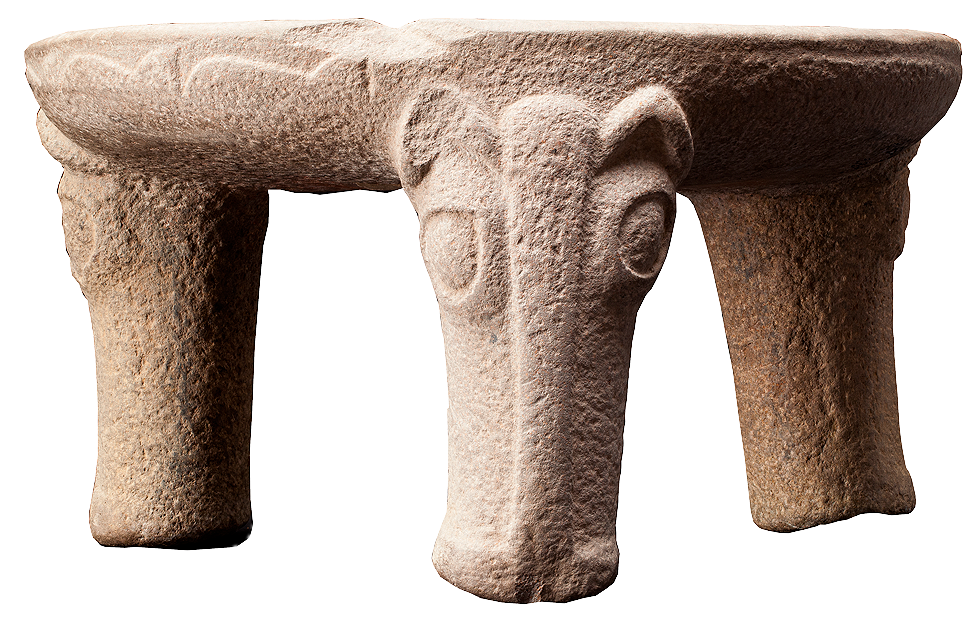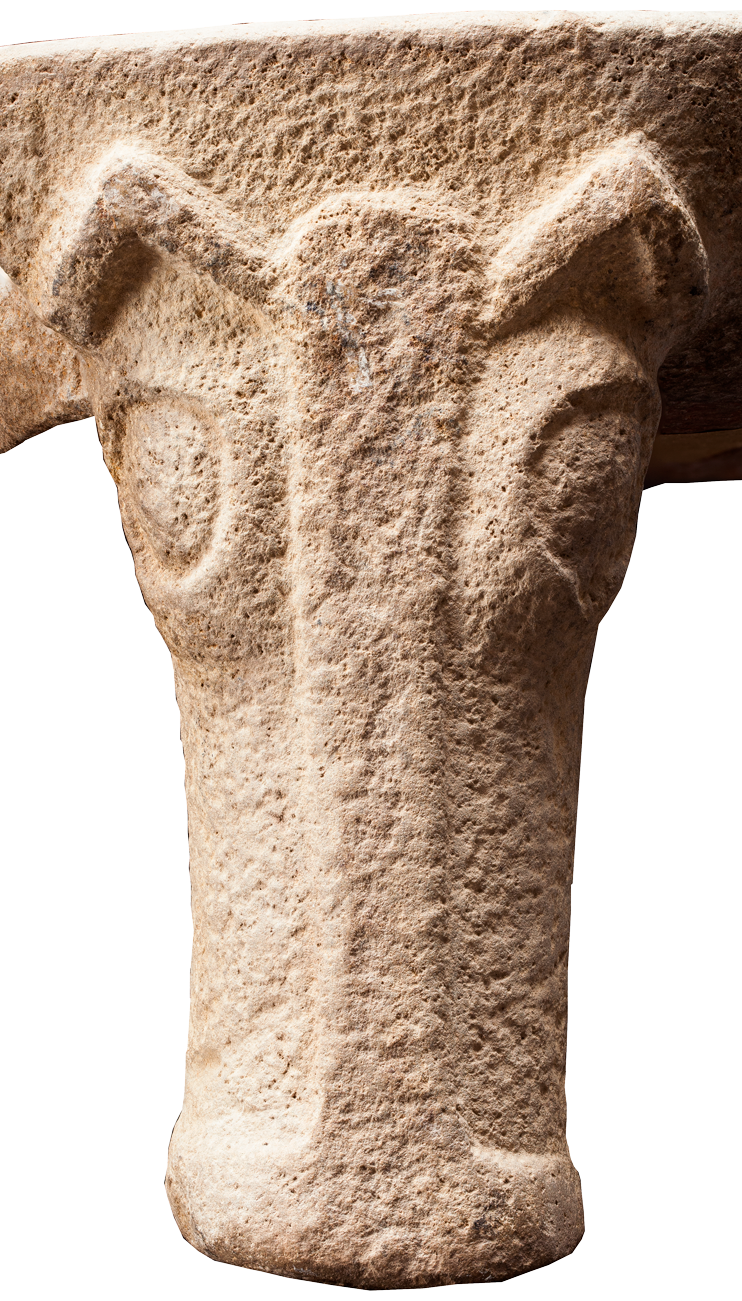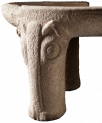Stone small table with images of animals on legs




Small table in the shape of a round dish on three legs with a curved edge-side. Tall massive legs of the table are designed like blunt-nosed animal heads with round eyes and pointy or round ears. Side skirting is covered with an arched or so-called "Dolphin-like" ornament with traces of red paint on the bottom. Traditionally, such tables are considered as portable sacrificial altars or altars used in religious ceremonies. Such finds, according to some researchers, are associated with relatively rich burials of female priestesses.
More information...Though there exists yet another opinion about the functional purpose of stone tables, dishes and flat stones. According to this point of view, those were used as graters for grinding paints and/or preparing cosmetics, which, however, could have had a ritual purpose. It is also possible that those were used to squeeze the juice of plants for preparation of the sacred drink sauma, known from the texts of the ancient books "Avesta" and "Rigveda".
Functional purpose: the scope of direct use of such tables still remains a mystery to archaeologists.
Notice of uniqueness: such tables of various shapes are often found in the mounds of early nomads of the Southern Urals.



